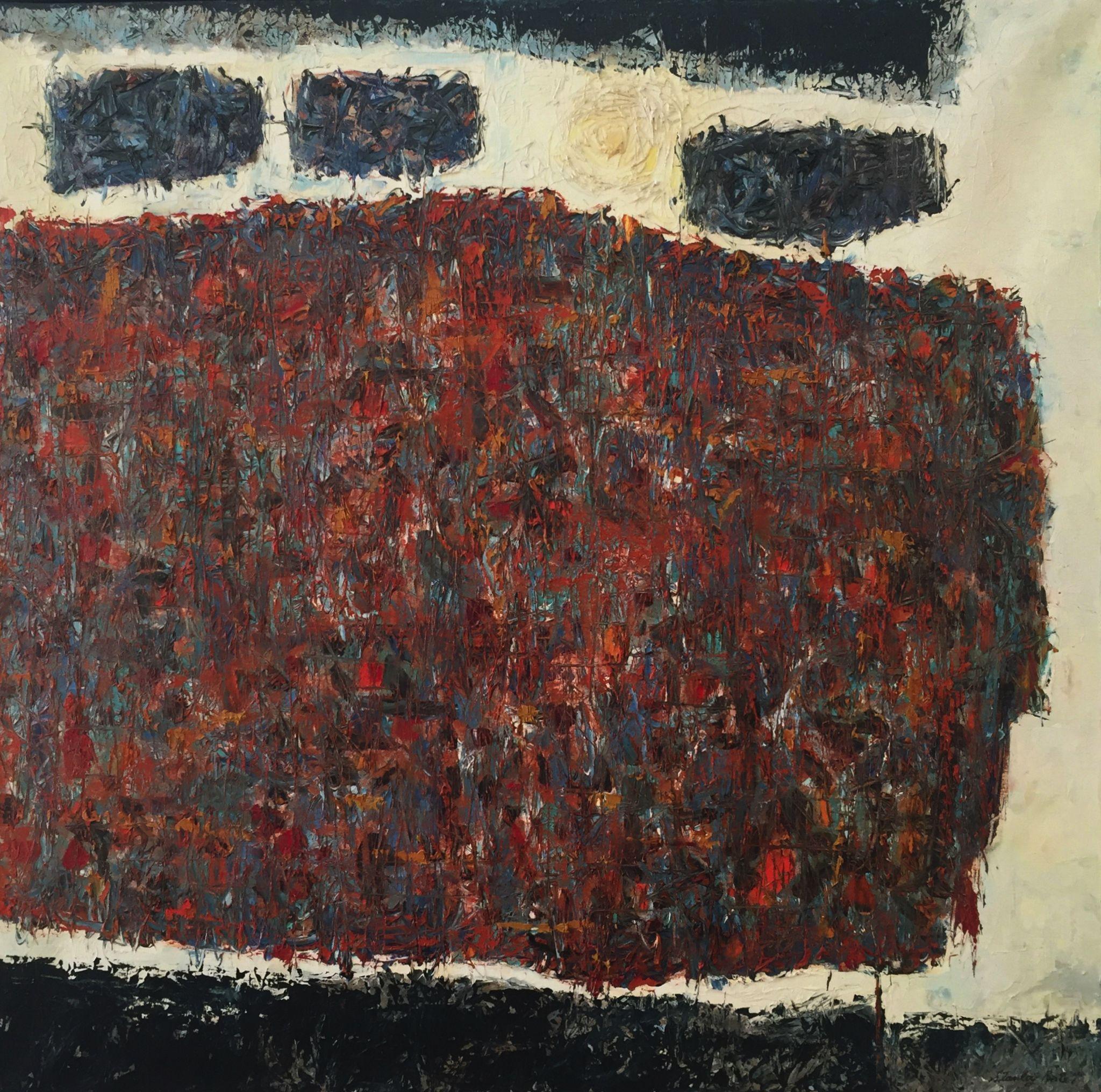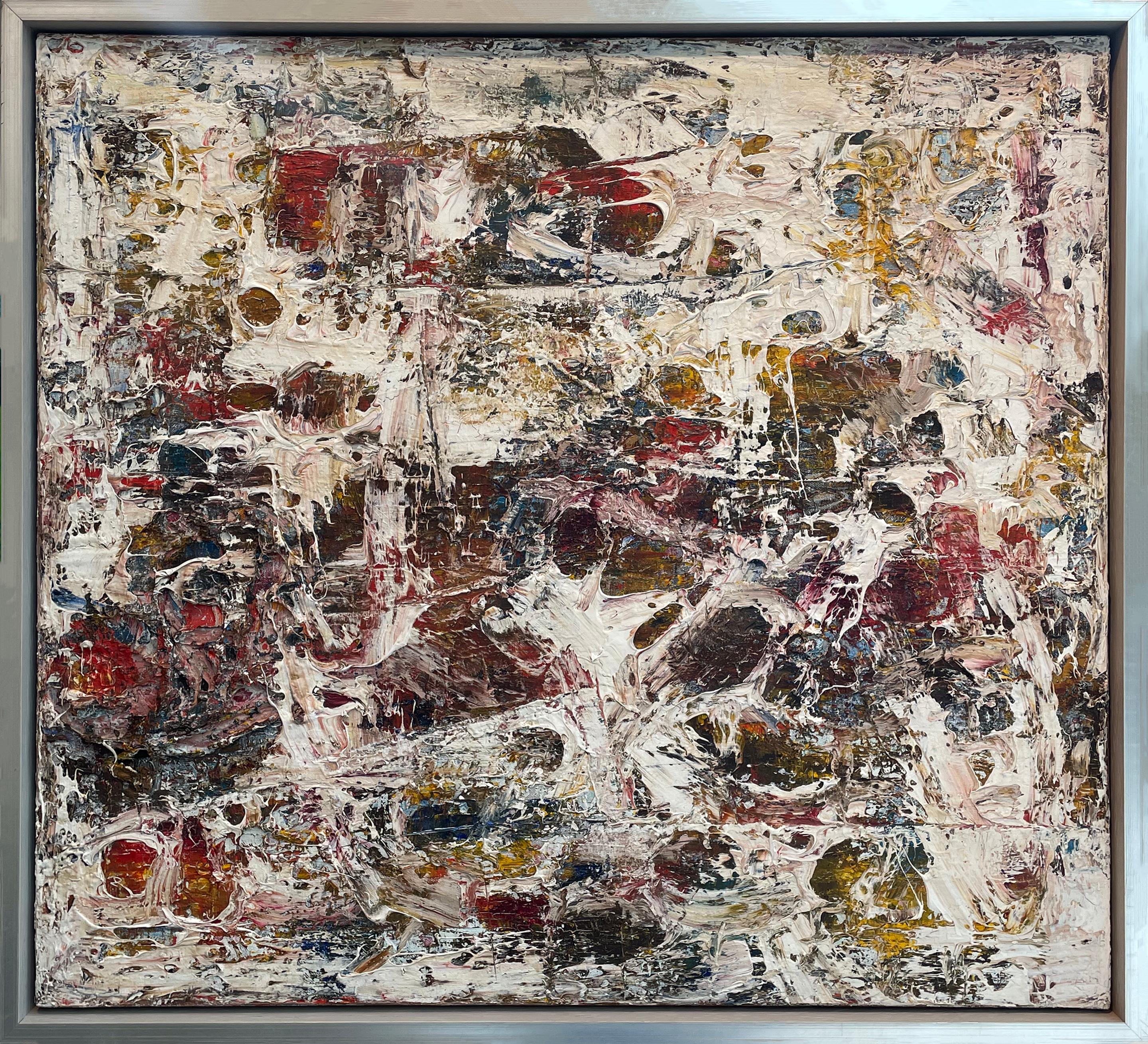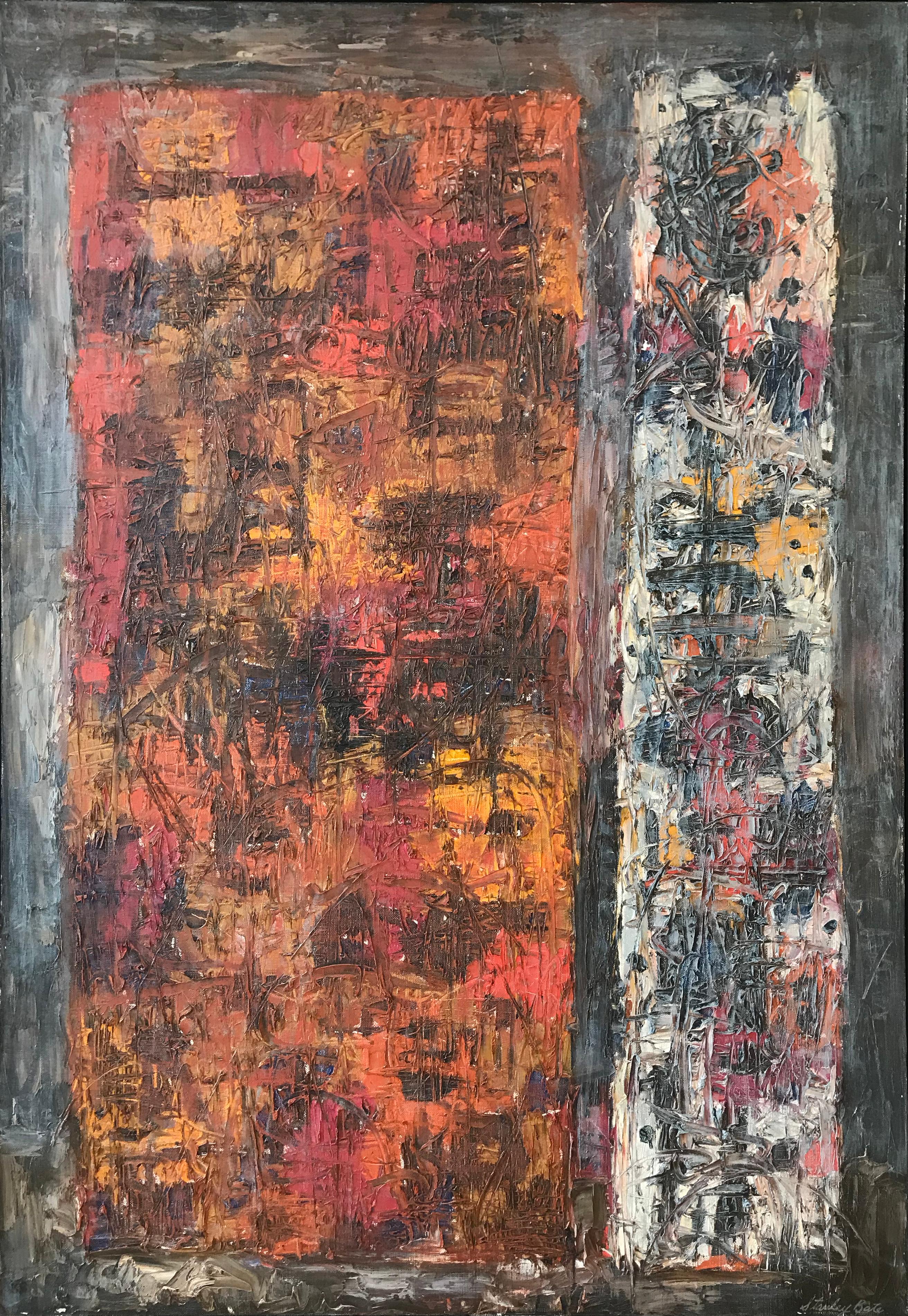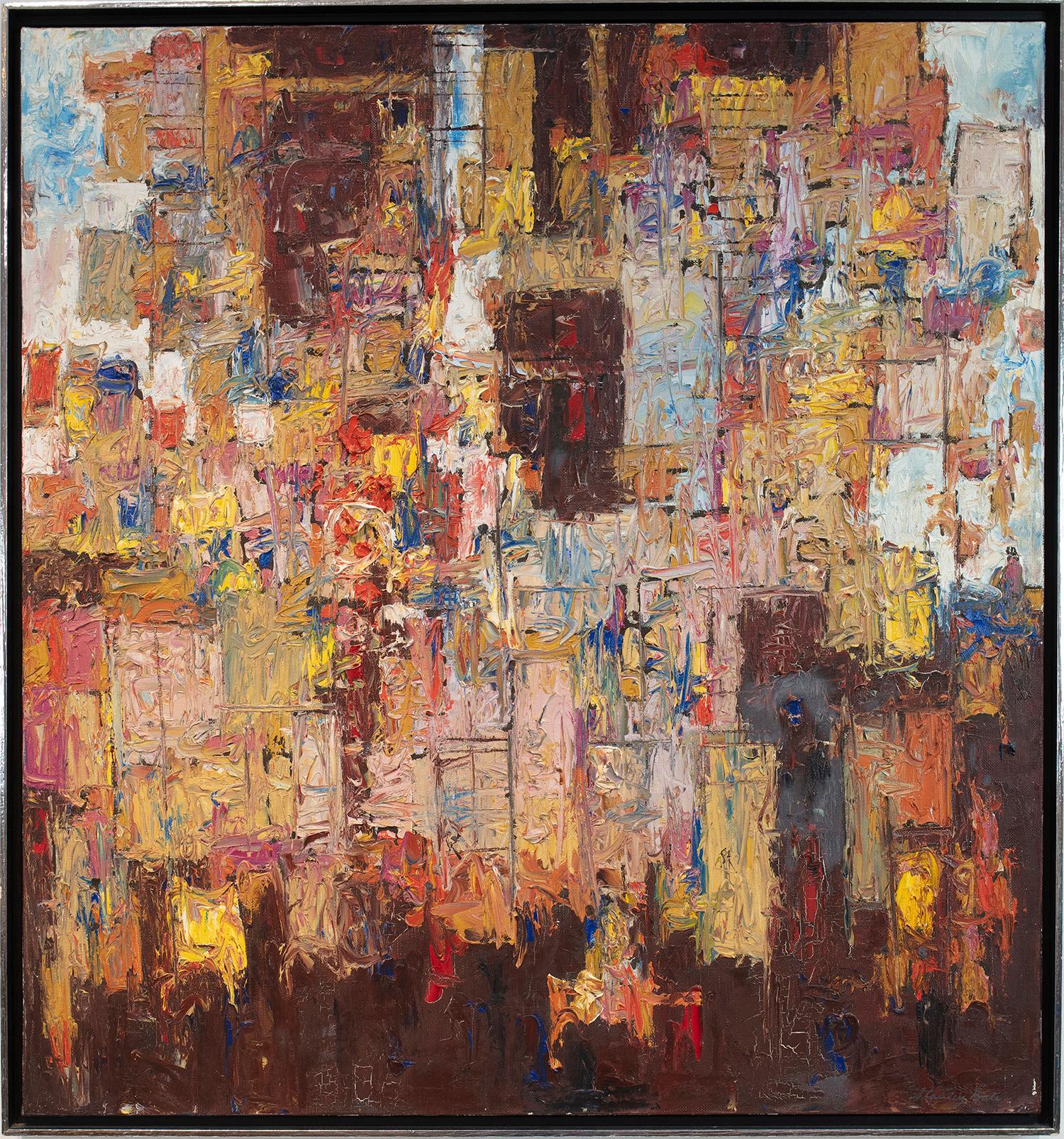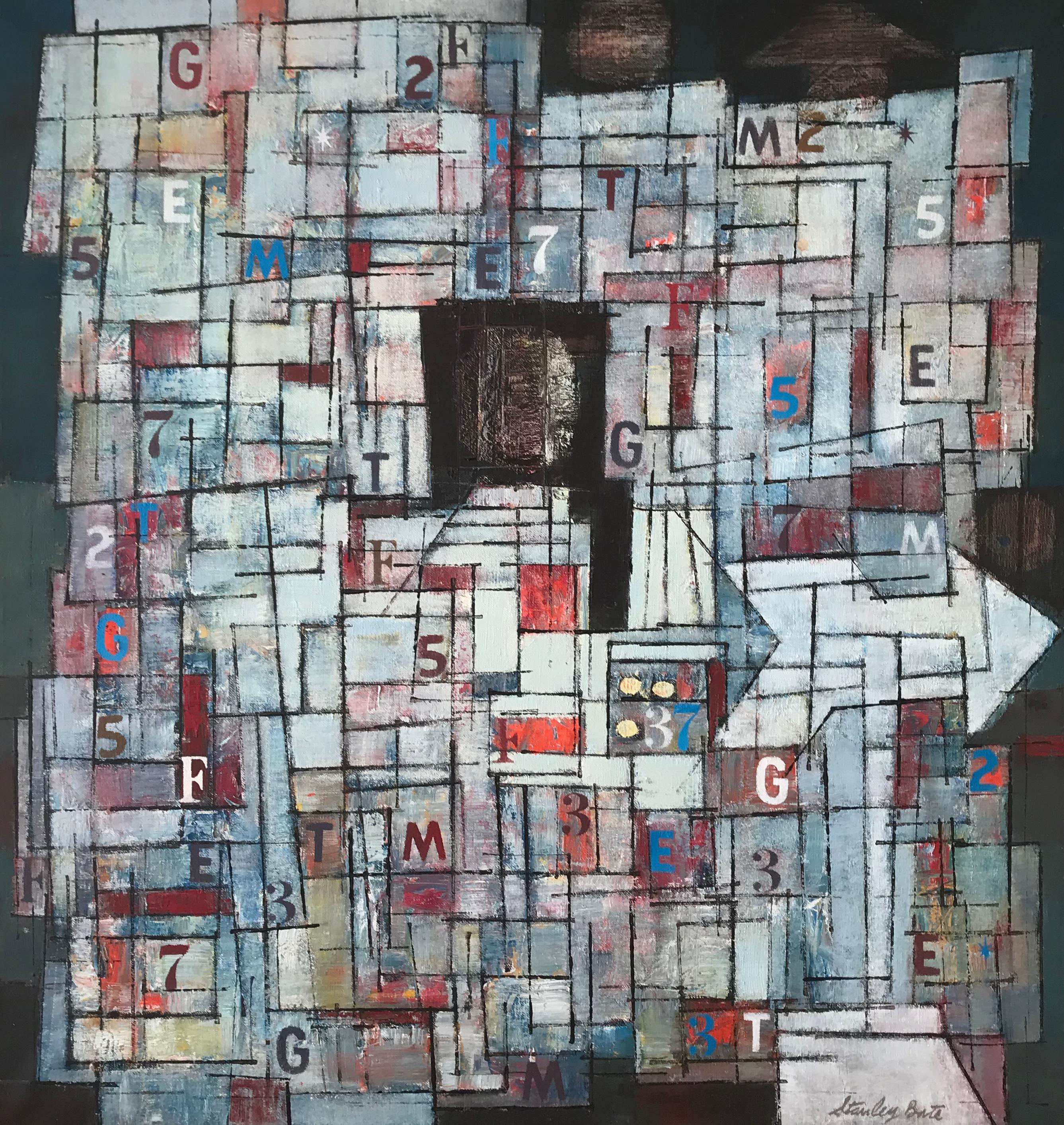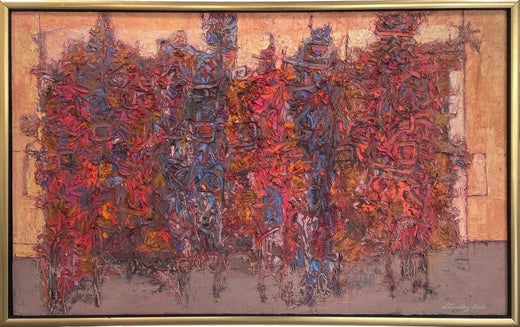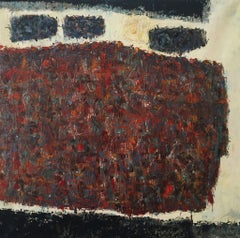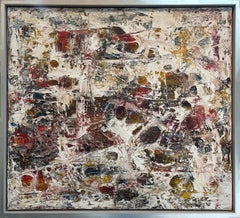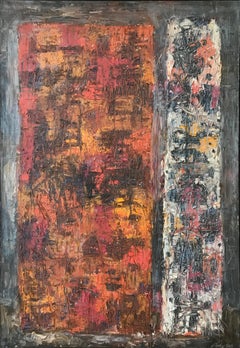Stanley Bate""Messages to Fribourg", Modernes abstraktes Gemälde der 1960er JahreCirca 1960
Circa 1960
Angaben zum Objekt
- Schöpfer*in:Stanley Bate (1903 - 1972, Amerikanisch)
- Entstehungsjahr:Circa 1960
- Maße:Höhe: 105,41 cm (41,5 in)Breite: 105,41 cm (41,5 in)Tiefe: 4,45 cm (1,75 in)
- Medium:
- Bewegung und Stil:
- Zeitalter:
- Zustand:Signed by artist. Professionally framed.
- Galeriestandort:Westport, CT
- Referenznummer:Anbieter*in: SBA0731stDibs: LU5448678882
Stanley Bate
Stanley Bate wurde am 26. März 1903 in Nashville, Tennessee, als Sohn von Henry C. und Nellie E. Freeman Bate geboren. Die Bates waren eine alteingesessene Familie in Tennessee. Henrys Bruder William Bate war von 1883-87 Gouverneur von Tennessee und von 1887-1905 Senator der Vereinigten Staaten. William war auch Generalmajor in der konföderierten Armee während des Bürgerkriegs und eine ziemlich schillernde Persönlichkeit. Henry und Nellie ermutigten ihren Sohn, eine formale Ausbildung anzustreben, doch der junge Stanley verzichtete auf eine richtige Schulbildung und entschied sich stattdessen für ein Kunststudium am Watkins Institute in Nashville. In den 20er Jahren zog Bate nach New York City, um an der Art Students League bei Frederick Bridgman zu studieren. Bald darauf erhielt er eine Stelle bei der Encyclopedia Britannica, wo er von 1927-29 als Art Editor tätig war.
Von 1929 bis zu seinem Tod im Jahr 1972 war Bate als selbständiger Künstler tätig. Er gab Kunstunterricht an der Art Students League und am Albany Institute of History and Art und verdiente sich ein zusätzliches Einkommen, indem er Illustrationen für Zeitschriften wie Outdoor Life und Popular Science anfertigte. Am 27. Januar 1934 heiratete Bate Emilie Rossel. Emilie war 1923 aus der Schweiz nach New York ausgewandert. Sie fand Arbeit als Gouvernante bei Alfred Vanderbilt und später als Chefsekretärin bei den Wall-Street-Investmentmaklern Kahn, Loeb und Co. Emilie lernte Stanley in den frühen 30er Jahren in New York kennen, als sie mit einer Freundin eine seiner Kunstausstellungen besuchte. Das kinderlose Paar wohnte in der 34. Straße in Manhattan. In dieser Zeit produzierte und stellte Bate seine Kunst aus und schloss sich mehreren Künstlergruppen an. Stanley und Emilie wurden Teil der New Yorker Kunstszene und speisten wöchentlich im Clubhaus der Society of Illustrators. Bates Zeit in New York war ausschlaggebend für die Entwicklung seines Malstils. Er lebte in New York, als eine der wichtigsten Bewegungen der modernen Kunst entstand, die dazu beitrug, dass New York Paris als Zentrum der Avantgardekunst ablöste. Diese Bewegung, die sich New Yorker Künstlerschule nannte, wurde später als Abstrakter Expressionismus bekannt. Sie bestand aus einer lose verbundenen Gruppe von Avantgarde-Künstlern, die in den 40er und 50er Jahren in New York City tätig waren. Die New York School wurde nicht durch einen bestimmten Stil definiert, sondern spiegelte eine Verschmelzung von europäischer Moderne und amerikanischer sozialer Relevanz wider, die sich in vielen einzelnen Stilen niederschlug. Einflüsse des Surrealismus, des Kubismus und des Modernismus sind in ihren Arbeiten ebenso zu finden wie das Interesse am Experimentieren mit unkonventionellen Materialien und Methoden. Die amerikanische Kunst stand zum ersten Mal an der Spitze der internationalen Avantgarde.
Bate war zweifelsohne den verschiedenen Stilen und Techniken ausgesetzt, die in den prägenden Jahren der New York School aufkamen. Mark Rothko und Robert Motherwell formulierten ihre Versionen der Farbfeldmalerei. Joseph Cornell experimentierte mit Assemblagen, Collagen und der Verwendung verschiedener Arten von strukturierten Farben. Jackson Pollock klebte Gegenstände wie Knöpfe und Münzen in seine frühen Werke, während Louise Nevelson gefundene Gegenstände verwendete. Helen Frankenthaler fügte ihren frühen Gemälden Sand zu. Die Künstler der New York School untergruben die traditionelle bildende Kunst, indem sie Mischtechniken und nicht-traditionelle Methoden einsetzten. Bate nahm diese vielfältigen Einflüsse auf, und schon bald wurden seine frühen realistischen Landschaften und Stillleben durch etwas völlig Neues ersetzt. Der Einfluss des Kubismus, insbesondere der flache, flache Raum der Bildebene, ist in vielen seiner Gemälde offensichtlich. Der Surrealismus zeigt sich in der Verwendung von Motiven aus dem Mythos, der primitiven Kunst und der Antike sowie in der an den Automatismus erinnernden Linienführung in seinen eher linearen Bildern. Die uneingeschränkte Experimentierfreude der New York School ist in Stanleys Werk allgegenwärtig. Wir sehen Anspielungen auf das Farbfeld, die Collage, das Einmischen von Texturen in die Farbe, gemischte Medien, die Einbeziehung gefundener Objekte und dickes, sattes Impasto. Er war sehr produktiv und experimentierte mit verschiedenen Medien wie Öl, Aquarell, Lithografie, Siebdruck, Holzschnitt, Zeichnung, Collage, Keramik und Skulptur. Er gilt als ein echter Modernist. Seine Arbeiten sind größtenteils abstrakt, aber manchmal sind auch Figuren und Gebäude zu erkennen. Er mischte häufig Farbe, Sand und Leim, um eine strukturierte Oberfläche zu erhalten, und kratzte dann durch diese Schicht hindurch, um einige der darunter liegenden Malereien freizulegen. Seine oft skurrilen Skulpturen spiegeln auch die unkonventionellen Methoden der New York School wider. Er leistete Pionierarbeit bei der Verwendung von Emaille und Kupfer in seinem Werk. Die Skulpturen werden nicht wie früher geschnitzt oder modelliert, sondern mit gemischten Medien und neuen Materialien hergestellt.
Neben dem Einfluss der New York School weisen viele seiner Werke eine starke Verbindung zur spanischen Schule auf, insbesondere zu den Werken von Antonio Tapies und Modesto Cuixart. Beide Künstler gehörten zu einer Avantgarde-Gruppe, die als Art Informel bekannt ist, dem spanischen Pendant zum Abstrakten Expressionismus. Diese Künstler arbeiteten ebenfalls mit gemischten Medien und brachten Objekte und Texturen in ihre Werke ein. Viele der Themen und Titel von Bate beziehen sich auf spanische Orte und Wörter. Es ist wahrscheinlich, dass Stanley einige Zeit in Spanien verbrachte und sich dort inspirieren ließ. Anfang der 40er Jahre begannen Stanley und Emilie, ihre Wochenenden in einer Scheune zu verbringen, die sie in Craryville, New York, ein paar Stunden nördlich von Manhattan, gekauft hatten. Die Scheune hatte keinen Strom und keine Sanitäranlagen, aber als das Paar schließlich beschloss, New York zu verlassen und ganz in Craryville zu leben, bauten sie die Scheune um und richteten im Erdgeschoss eine Galerie und im Obergeschoss ein Studio und Wohnräume ein. Obwohl die Bates aus New York City wegzogen, blieb Stanley Teil der New Yorker Kunstszene und stellte in den 50er und 60er Jahren in New York und anderswo aus. Zu seinen Lebzeiten wurde er von den New Yorker Galerien Knoedler and Company, Kennedy Galleries, Rose Fried Gallery und Key Gallery sowie der Tyringham Gallery in Tyringham, Massachusetts, vertreten. Craryville war Stanleys Heimat bis zu seinem Tod am 21. August 1972. Emilie starb 1984. In ihrem Nachruf wurde darum gebeten, Spenden an das Albany Institute of History and Art zu tätigen. Das Institut veranstaltete 1973 eine Retrospektive von Bates Werk. Seit seinem Tod sind Bates Werke in zahlreichen Ausstellungen und Sammlungen zu sehen.
- VersandAngebot wird abgerufen …Versand von: Albany, NY
- Rückgabebedingungen
Mehr von diesem*dieser Anbieter*in
Alle anzeigen1960er, Moderne, Abstrakte Gemälde
Leinwand, Öl
1960er, Moderne, Abstrakte Gemälde
Leinwand, Öl
1960er, Moderne, Abstrakte Gemälde
Leinwand, Öl
1960er, Moderne, Abstrakte Gemälde
Leinwand, Öl
1960er, Moderne, Abstrakte Gemälde
Silber
1960er, Moderne, Abstrakte Gemälde
Leinwand, Öl
Das könnte Ihnen auch gefallen
20. Jahrhundert, Abstrakte Gemälde
Leinwand
1960er, Abstrakt, Abstrakte Gemälde
Mixed Media, Öl
Mitte des 20. Jahrhunderts, Abstrakt, Abstrakte Gemälde
Öl
Mitte des 20. Jahrhunderts, Abstrakt, Abstrakte Gemälde
Öl
1950er, Abstrakt, Abstrakte Gemälde
Öl
Vintage, 1950er, amerikanisch, Moderne der Mitte des Jahrhunderts, Gemälde
Leinwand
